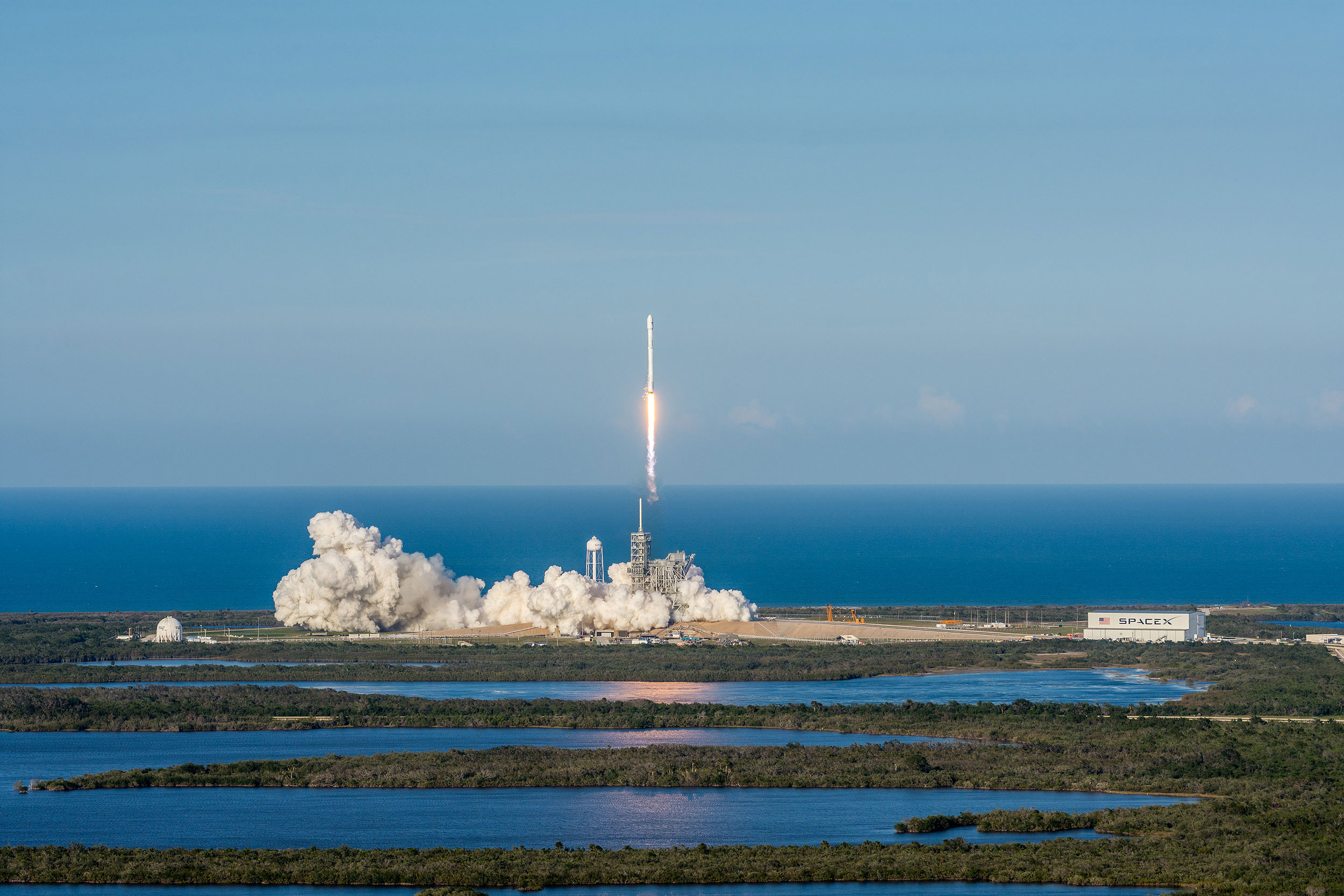SpaceX Has Reused Its First Rocket

SpaceX has recycled its way into history—and redefined the future of commercial space flight.
On Thursday evening, Elon Musk’s space-faring company did something truly remarkable. It successfully launched a refurbished rocket booster into space, for the first time ever. Not only that: it also put a satellite into geostationary orbit, landed the spent rocket, and even tried to recover the fairing that covered the payload.
It’s the culmination of 15 years of work for SpaceX, which hopes to turn commercial space flight into a profitable venture. To make that vision feasible, though, the company has long realized that reusable rockets, which were one of our 10 breakthrough technologies of 2016, were an essential part of its business model.
When you think about it, that makes total sense. As the New York Times notes, a typical rocket launch of the type performed by SpaceX can cost around $62 million. But baked into that figure is the purchase of a one-time-use rocket that, once spent, falls to Earth and breaks up. SpaceX's executives have said that reusable boosters could trim as much as 30 percent from the launch price.
And yet, until now, no other organization has managed to reuse an orbital rocket—so it was with some trepidation that many spectators watched yesterday's launch. It’s not clear how much discount SES, whose satellite was launched into orbit, got in order to compensate for concerns over potential reliability issues. But its sigh of relief can only be matched by Elon Musk’s elation. Following the launch he enthused that “this is a huge day … my mind's blown, frankly.”
As Ars Technica notes, though, SpaceX now plans to push on with the kind of Muskian ambition that made this happen in the first place. The plan: to have rockets launched, landed, and then relaunched again within the space of 24 hours by 2018. And those rockets, it hopes, will fly 10 flights without refurbishment, and up to 100 flights total.
It’s not clear how much effort that will take, because SpaceX has remained tight-lipped about the work required to ready the rocket used Thursday for launch after its first flight. But as it tests more, it will be able to work out the design tweaks required to make them more robust. And at any rate, for a company that has endured its fair share of troubles, optimizing its design seems within reach given this first proof-of-concept went so smoothly.
If SpaceX does manage to make the 24-hour turnaround a reality, it will quickly assume a position of power in the space industry. As Musk explained in a press conference following yesterday’s launch:
"Reusability has been put forth as really too hard, or not really feasible. Now, in order to be competitive in launch costs, I think it's going to be necessary for other companies to do the same thing. Imagine if we were an aircraft company selling aircraft that could be flown many times, and everyone else was selling aircraft that could be flown once, I mean, you know, that's not a very competitive position to be in."
It’s often tempting to scoff at Musk’s outlandish ideas as the kind of hyperbole that only the Silicon Valley elite can muster. But for once, it seems hard to question the man’s optimism. He promised the world reusable rockets, and he's delivered reusable rockets. Perhaps his vision of flying people to Mars isn’t as far-fetched as it sounds.
(Read more: New York Times, Ars Technica, “Reusable Rockets,” “Following Rocket Failure, SpaceX Struggles to Relaunch,” “Mr. Musk Goes to Mars”)
Keep Reading
Most Popular
Large language models can do jaw-dropping things. But nobody knows exactly why.
And that's a problem. Figuring it out is one of the biggest scientific puzzles of our time and a crucial step towards controlling more powerful future models.
The problem with plug-in hybrids? Their drivers.
Plug-in hybrids are often sold as a transition to EVs, but new data from Europe shows we’re still underestimating the emissions they produce.
Google DeepMind’s new generative model makes Super Mario–like games from scratch
Genie learns how to control games by watching hours and hours of video. It could help train next-gen robots too.
How scientists traced a mysterious covid case back to six toilets
When wastewater surveillance turns into a hunt for a single infected individual, the ethics get tricky.
Stay connected
Get the latest updates from
MIT Technology Review
Discover special offers, top stories, upcoming events, and more.